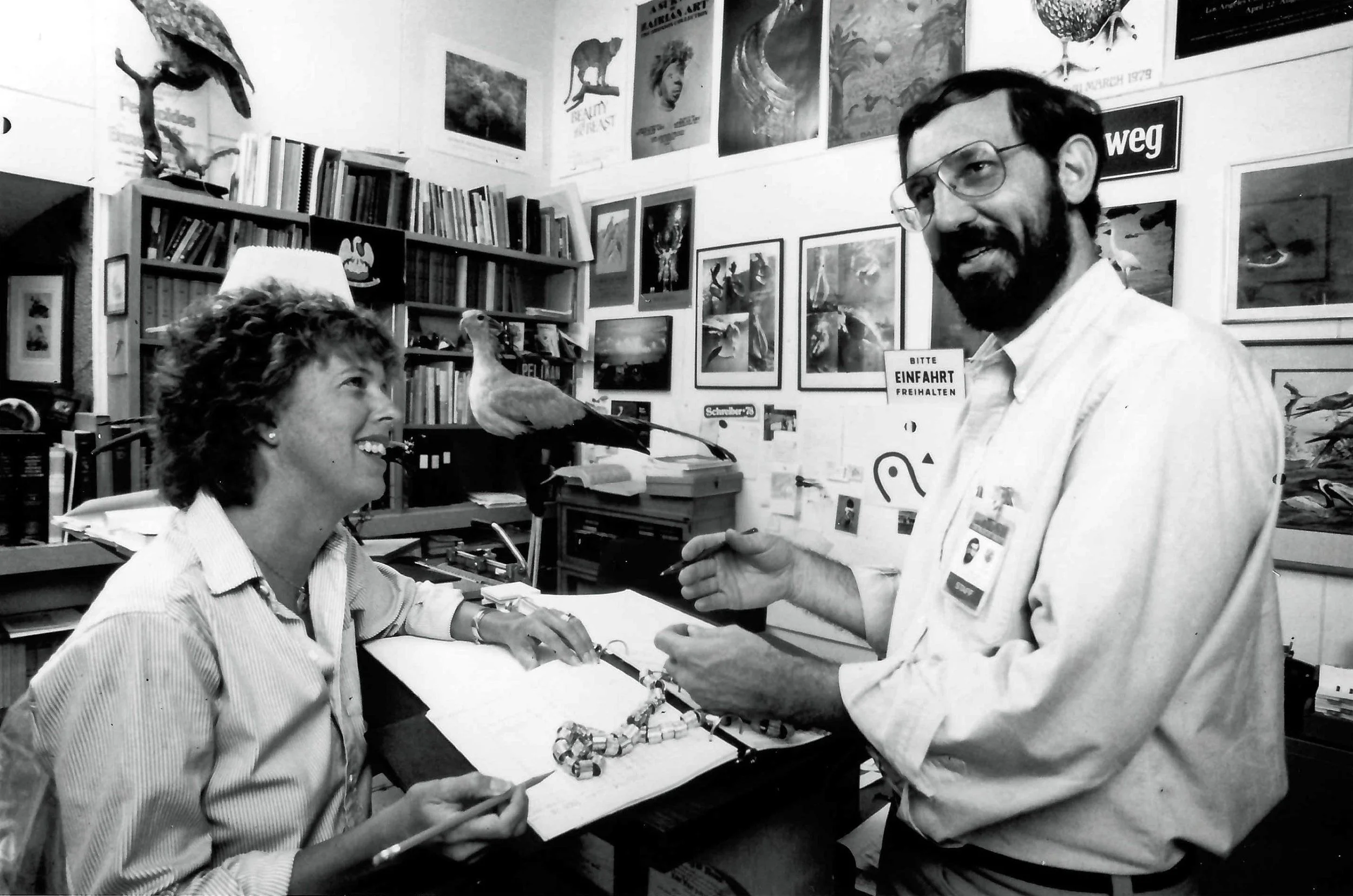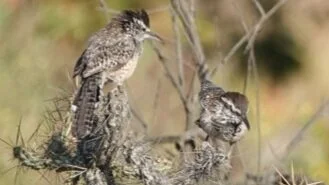At the northern edge of the Yucatan Peninsula in the southeast of Mexico, a Ruby-throated Hummingbird alights on a small branch. Weighing just three grams, this bird is preparing to begin its first spring migration. As dusk settles over the Yucatan shoreline, the hummingbird takes flight and heads out over the Gulf of Mexico. After flying 900 miles during the entire night without food, water, or rest, the hummingbird is exhausted, having lost almost half its body weight. Then, it sees the color that will save its life—the green trees of the east Texas shoreline. With the goal in sight, the hummingbird summons all its remaining energy to reach the shoreline, descends into a patch of flowers, and soon regains the lost energy and body weight by eating small insects and flower nectar. This incredible journey between Mexico and United States, however, is short compared to the migration of other bird species.
YOUNG BIRDERS: Charismatic and Clever—The Cactus Wren
YOUNG BIRDERS—A Birder’s Paradise … Oaxaca, Mexico
I visited the Mexican state of Oaxaca for a birding trip from January 11th to January 17th, 2019. Oaxaca is located southeast of Mexico City, and is the 5th largest Mexican state. It is bisected by the Sierra Madre Mountain range, which creates a continental divide between the Atlantic Slope to the north and the Pacific Slope to the south.
Western Tanager, Vol. 83 No. 6, Jul–Aug 2017
ON THE COVER
‘I’iwi | Hakalau Forest Wildlife Refuge, Photo by Jack Jeffrey
Found nowhere else in the world, the spectacular scarlet‐feathered I’iwi (Drepanis coccinea) is the last of the sickle‐billed Hawaiian honeycreepers. Before the appearance of humans in Hawaii, more than fifty different honeycreeper species were known to have existed. Today, only 18 species remain, most of these are endangered or threatened. I’iwi feathers were once collected by early Hawaiian bird catchers or “kia manu”, and used for the feathered cloaks of Hawaiian Royalty. I’iwi are still fairly abundant in the remaining high elevation native koa‐ohia forests of Hawaii Island and Maui, but rare on the other major islands. The long down‐curved bill of the I’iwi is a perfect match for the shape of tubular flowers of many native plants, making I’iwi important pollinators of these and other native plants. To see an I’iwi, or to hear its loud “rusty hinge” call is an extraordinary experience and one that can only be had in a Hawaiian rainforest.
In this issue
• YOUNG BIRDERS: Birds of the Hakalau Forest on the Big Island of Hawai’i, By Dessi Sieburth
• INTERPRETING NATURE: Does nature have a place in the English Language Arts classroom?, By Robert Jeffers, L.A. Audubon Treasurer | Instructional Coach
• Princeton Phainopepla Project, Please send your sightings to Dr. Daniel Baldassarre, Princeton University
• Birds of the Season—June 2017, By Jon Fisher
• OPINION: Every Creature on Earth is Under Threat, By Louis Tucker, LAAS Member and Field Trip Leader
• A Tribute to Judy Raskin, By Brad Rumble, LAAS Director at Large
Western Tanager, Vol. 83 No. 5, May–June 2017
On The Cover: Brown-eyed Primrose | Photo by Read Howarth
About the Photographer: Read Howarth is a disability insurance broker who lives in Los Angeles County. He moved here in 2009 from New Jersey. His then moderate lifelong interest in birding was given a jolt with his observation of a Surf Scoter in Marina Del Rey, while sailing. His first Audubon Field Trip was three years ago, on a Kurt Leuschner led trip to Anza-Borrego. It was to become the first of many Audubon walks and field trips since. Birding, sailing and volunteering as a Docent in Topanga State Park keep him out in nature and provide springboards for more educational opportunities in the natural sciences.
In this issue
• L.A. Audubon's Anza-Borrego Field Trip March 2017, By Read Howarth, LAAS Member and Field Trip Participant, Photos by Read Howarth
• Birds and Other Wildlife seen on Anza-Borrego Field TripBy Kurt Leuschner, LAAS Member and Field Trip Leader | KLeuschner@collegeofthedesert.edu
• SCHREIBER GRANT UPDATE: The role of behavior in isolation: novelty and courtship across a hummingbird hybrid zone | By Brian Myers, Grant Recipient 2015
• INTERPRETING NATURE: From L.A. to Joshua Tree: Opportunities and Experiences in Nature, By Robert Jeffers, L.A. Audubon Board Member and Joshua Tree Adventure Chaperone, Spring Break 2017
• We Wish You a Merry Christmas: An Adventure, By Louis Tucker, Los Angeles Audubon Society Member and Field Trip Leader
• YOUNG BIRDERS: The Red-crowned Parrot, By Dessi Sieburth
• Birds of the Season — April 2017, By Jon Fisher







